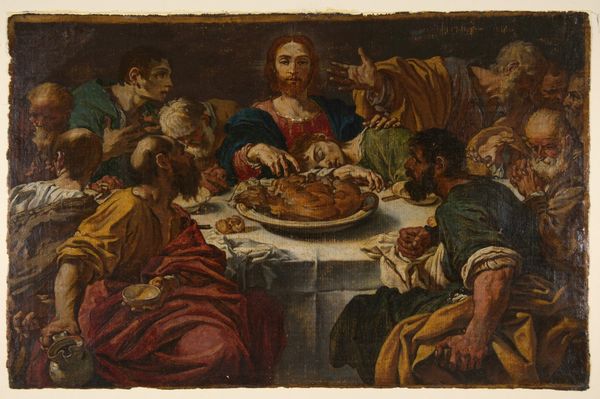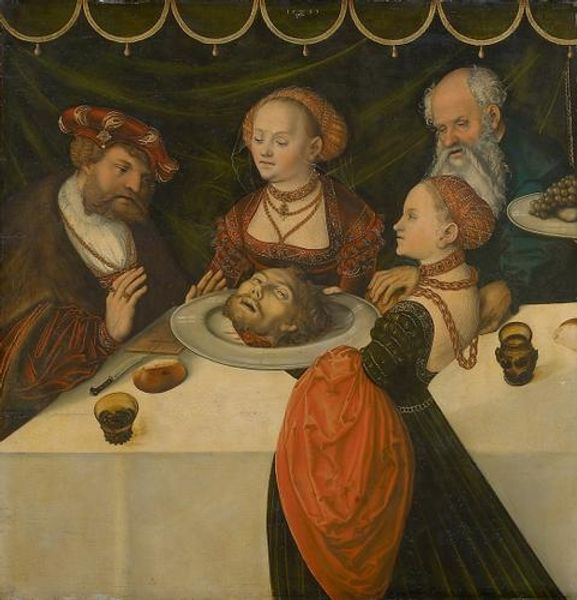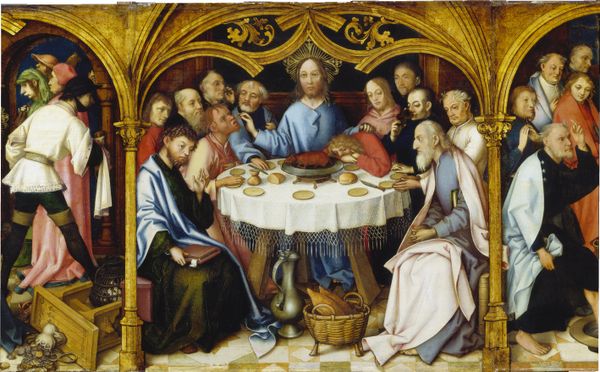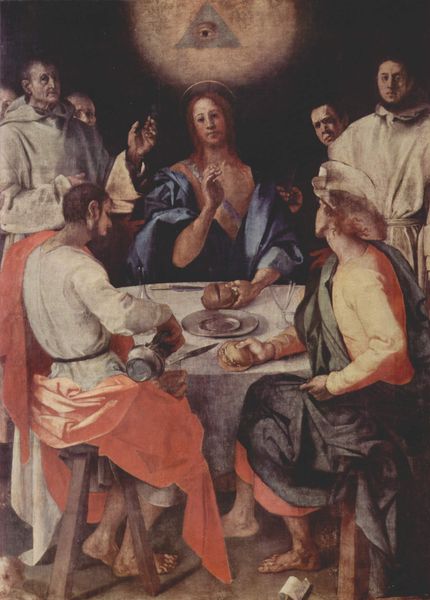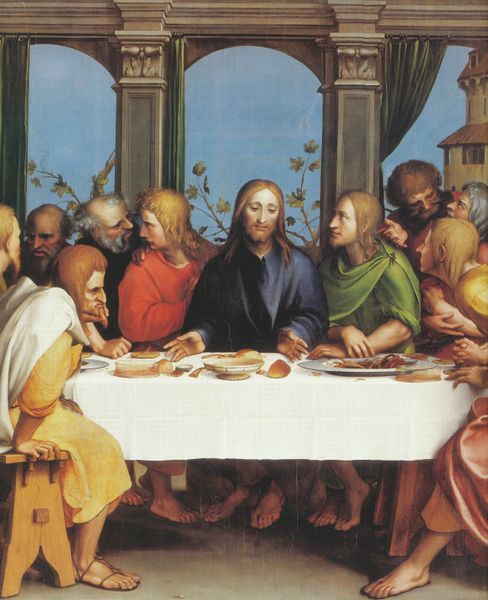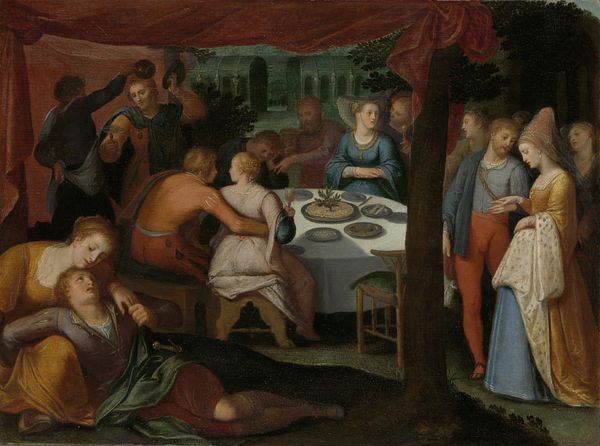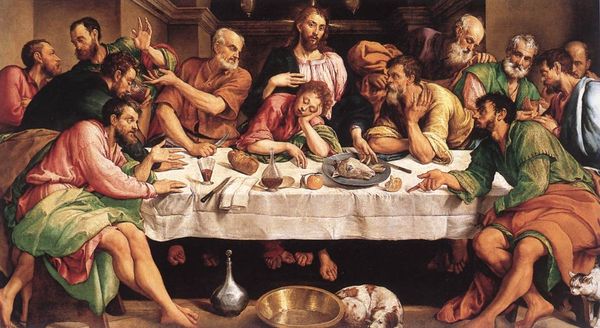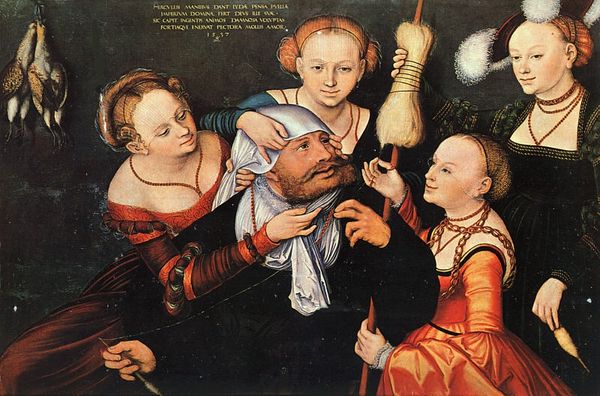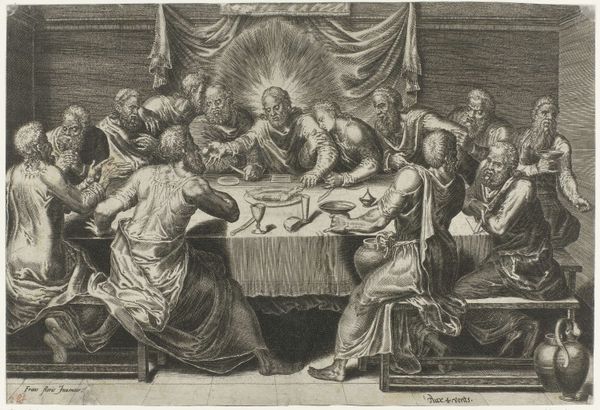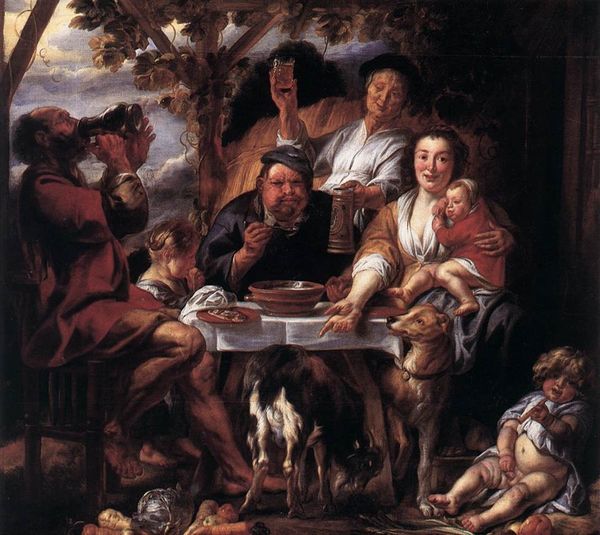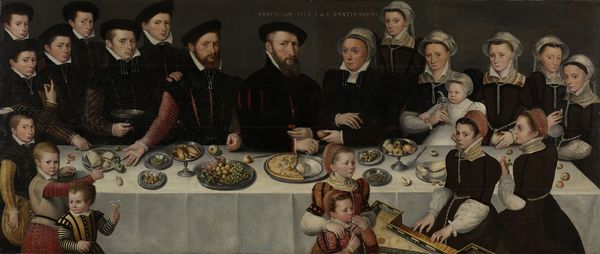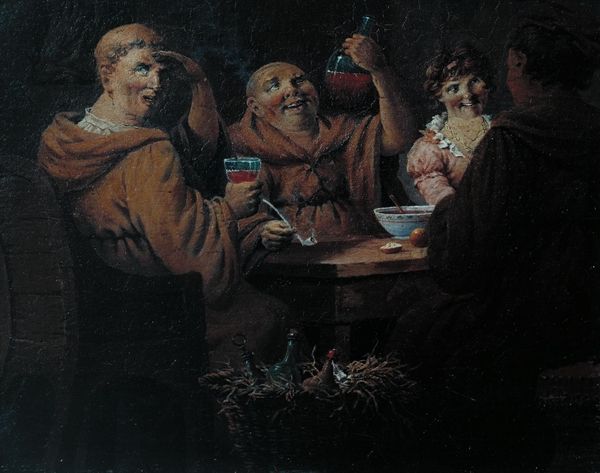
Dimensions: 80 x 117 cm
Copyright: Public domain
Lucas Cranach the Elder created this oil-on-panel painting, "Feast of Herod," sometime in the 16th century. Cranach was working in a Germany undergoing the Protestant Reformation, and the painting’s stark depiction of John the Baptist’s severed head can be seen as a commentary on religious and political power. The image is composed according to the codes of court portraiture but undermines this association by placing a gruesome image at the centre. Herod's feast, a scene of royal excess, is juxtaposed with the violence of the execution. The painting reflects the anxieties of a society grappling with religious upheaval and the questioning of established authority. By studying court records, religious pamphlets, and other period documents, we can better understand the social context in which this artwork was created and viewed. The power of art lies in its ability to reflect and challenge the norms of its time, but that power can only be realised through historical context.
Comments
No comments
Be the first to comment and join the conversation on the ultimate creative platform.

